#Myth Analysis
Text

The kingdom of the sea was given to Poseidon during the division of the world, the vast sea, his territory occupies the biggest part of earth, yet remaining unexplored in great degree, dangerous, deep, just like the human subconscious mind which no one knows its exact magnitude and topology, perhaps sea monsters hide in its waters.. Zeus became the ruler of Olympus after his marriage with Hera, in the same way Poseidon's marriage to Amphitrite made him the ruler of the sea, perhaps behind these events lies the importance of hieros gamos, a collaboration and meeting of male and female powers to serve a greater purpose, a mutual metamorphosis. Before this union with Amphitrite, Poseidon was a cthonic god, his name was the same but the etymology surprises, "Poseidon" or else "Poteidan" means "husband of goddess Da", "Da" being the shortest version of the name of Demeter standing for "earth", Poseidon in this sense can be considered the "consort of earth". We detect something less familiar, Poseidon didn't always reside in the sea nor he was its ruler, his initial character and life was different before some balances in Olympus change. A very common occurrence when it comes to Greek gods and heroes that their properties change in different settings and social conditions. So, Poseidon from an earthly "Father" (he was called that) with strong phallic character, the male force fertilising the Great Mother of nature, became the dark lord of the sea, not so dark as Hades though, water being a source of life offering catharsis too no matter its ambivalent and unpredictable nature.
Poseidon and Amphitrite by Rupert Bunny, 1913.
#mythology#art#symbolism#ancient greece#greek gods#poseidon#demeter#amphitrite#olympian gods#greek myths#myth analysis#psychoanalysis#sea#subconciousmind#water#elements#rupert bunny
16 notes
·
View notes
Text
narcissus this, narcissus that! he's so egotistic. so self-absorbed, blah blah blah
but like, slow down to actually think about the symbolism of the myth. of the mirror he so persistently holds up to every action, every gesture and facial expression. I think it reveals an awful lot about the human nature, past the self-absorption.
for starters, consider that homo sapiens are one of the few creatures with self-awareness - as in they can peer into a mirror and recognize what they see as a reflection of the self. whereas, other creatures perceive the image as some other being.
perhaps narcissus only represents that transition from our animalistic ancestors to this higher functioning existence of self-awareness, of consciousness - that extends to encompass the benefits and the punishments of it.
as a human, it's awful to be so self-aware at times. but sometimes it can be a gift.
idk. u get me? i just think it's awfully poetic? misrepresented myth, honestly.
anyways, im going to bed or whatever.
maybe i'll just lie in bed staring at the dim ceiling contemplating my existence and its meaning - something i probably wouldn't preoccupy myself with if I were a creature without self-awareness.
-penned by j. m. medna (2024)
#my journal#the myth of narcissus#greek mythology#myth analysis#journal#prose#again with the existentialist diaries#so i'm narcissistic#yes#and?#me#mine#rant#no beta#we die like gods
9 notes
·
View notes
Text
The uplifting version-
I’ve been trying not to share to much from working on a song, it’s a fantastic read and I want to let you guys discover stuff for yourself. What I can’t not share is this— it a early version of doubt comes in (i don’t think it was ever used) and it’s much more positive and for that it hurts more.

I like how he starts very positive, his faith is strong in Eurydice and the world. But as he presses on the fates force this from him, acting sort of as those intrusive doubtful thoughts they do though other versions.
What also hurts is that it’s very reminiscent of the form of the myth where Orpheus makes it but she doesn’t. He makes it fully into the sunshine and is so overwhelmed by that excitement and relief that he turns to embrace her not knowing she’s yet to step over the threshold. OW.
#hadestown#hadestown broadway#hadestown musical#old version#song analysis#myth analysis#Greek myth#orpheus and eurydice#orpheus hadestown#eurydice hadestown#meta#doubt comes in#the fates
52 notes
·
View notes
Text

I literally narrowed this question down to ONE aspect of Dionysos’ cult portrayed in ONE play and I’m still at war with the word count 😭
#studyblr#study aesthetic#studyspo#eso studies#academia aesthetic#ancient greek history#ancient greek religion#hellenic polytheist#history student#myth analysis
17 notes
·
View notes
Text
Statistics of Apollo's Lovers
I was wondering just how unfortunate of a love-life our boy Apollo had, so - as one does - I did the research, math, and writing of said love-life.
such is the life of an adhd teen :)
In total, there are 59 people on this list. I have them separated into eight groups; Immortal, Immortal & Rejected, Lived, Died, Rejected & Died, Rejected & Cursed, Rejected & Lived, and who were Rejected by Apollo
Disclaimer: I am not a historian nor an expert in Greek Mythology, I am just a very invested nerd in Mythology, and in Apollo's mythology in general, and got curious about what his rap sheet actually looks like.
Sidenote: There will be some "lovers" not on this list. Reasons being;
No actual literary sources behind them
Said literary sources are dubious at best
Not enough information is given about the nature of their relationship to make an accurate take
So if somebody isn't on this list, it's because of one of those three reasons. Although there is still a chance I missed somebody! :)
Also, no RRverse lovers include in this list. Sorry my fellow ToA fans.
(Edited 04/29/24 - Currently adding in sources/references/expanding on the myths themselves. bare with me lol)
Let's begin! :D
Immortal Lovers
Calliope: muse of epic poetry. Mother of Hymenaios and Ialemus by Apollo.
Clio: muse of history
Erato: muse of love poetry
Euterpe: muse of music
Polyhymnia: muse of hymns/sacred poetry
Melpomene: muse of tragedy
Thalia: muse of comedy. Mother of the Corybantes by Apollo.
Terpsichore: muse of dance
Urania: muse of astronomy
Boreas: the North Wind. yes Apollo dated the North Wind. Who knew? It's mentioned in the Argonautica by the Boreads - they call Apollo "beloved of our sire" so...hmm. wonder what happened there because that's all we get.
10 lovers total here.
9 Female, 1 Male
Immortal & Rejected
Hestia: goddess of the Hearth
1 Interest. Female.
Lovers Who Lived:
Branchus: mortal shepherd, gifted prophecy
Rhoeo: mortal princess, eventually married an apprentice of Apollo
Ourea: demigod daughter of Poseidon, dated Apollo during his punishment with Laomedon; had a son named after the city of Troy
Evadne: nymph daughter of Poseidon, Apollo sent Eileithyia & (in some texts) the Fates to aid in their son's birth
Thero: great-granddaughter of Heracles, described as "beautiful as moonbeams"
Cyrene: mortal princess-turned-nymph queen, kick-ass lion wrangler, and mother of two of Apollo's sons - Aristaeus (a god) and Idmon (powerful seer)
Admetus: mortal king, took great care of Apollo during his second punishment, Apollo wingmanned him for Alcestis's hand - basically Apollo doted on him <3
Hecuba: queen of Troy, together they had Troilus.
It was foretold that if Troilus lived to adulthood, Troy wouldn't fall - unfortunately, Achilles murdered Troilus in Apollo's temple. When the Achaeans burned Troy down, Apollo rescued Hecuba and brought her to safety in Lycia.
Hyrie/Thyrie: mortal. mothered a son by Apollo. Their son, Cycnus, attempted to kill himself after some shenanigans and his mother attempted the same. Apollo turned them into swans to save their lives.
Dryope: mortal. had a son named Amphissus with Apollo, who was a snake at the time. Later turned into a lotus flower, but it had nothing to do with Apollo so she's still on this list. (noncon; written by Ovid in Metamorphoses)
Creusa: mortal queen. had a son named Ion with Apollo. Please check out @my-name-is-apollo's post for more details because they make some good points about what's considered "rape" in Ancient Greece.
Melia: Oceanid nymph. Had a son w/h Apollo named Tenerus. will expand on her in a bit
Iapis: a favorite lover. Apollo wanted to teach him prophecy, the lyre, ect. but Iapis just wanted to heal :) so Apollo taught him healing :)
Aethusa: daughter of Poseidon & the Pleiad Alcyone. Mother of Linus and Eleuther. She is the great-great grandmother of Orpheus.
Acacallis: daughter of King Minos. there's a lot of variation on whether or not she had kids with Hermes or Apollo. Some say she had a kid with each.
Chrysothemis: nymph queen who won the oldest contest of the Pythian Games - the singing of a hymn to Apollo. She had three daughters, and one of them is said to be Apollo's.
Corycia: naiad. had a son with Apollo. the Corycian Cave north of Delphi is named after her
Leuconoe (also Choine or Philonis): daughter of Eosphorus, god of the planet Venus, and mother of the bard Philammon.
Melaena (also Thyia or Kelaino): mother of Delphos, member of prophetic Thriae of Delphi. Priestess of Dionysus.
Othreis: mothered Phager by Apollo, and later Meliteus by Zeus.
Stilbe: mother of Lapithus and Aineus by Apollo.
Syllis (possible same as Hyllis, granddaughter of Heracles): mothered Zeuxippus by Apollo.
Amphissa: Apollo seduced her in the form of a shepherd. They had a son named Agreus.
Aria (or Deione): had a son named Miletus. Hid him in some smilax. Her father found him and named him.
Arsinoe: she and Apollo had a daughter named Eriopis.
Queen of Orkhomenos (no name is given): Mother of Trophonius (my fellow ToA fans will recognize that name haha).
Hypermnestra: Either Apollo or her husband fathered her son Amphiaraus. (sidenote: @literallyjusttoa suggested that Apollo was dating both Hypermnestra and Oikles, and I, personally, accept that headcannon)
Manto: Daughter of Tiresias. Apollo made her a priestess of Delphi. They had a son named Mopsus. When Apollo sent her to found an oracle elsewhere, he told her to marry the first man she saw outside of Delphi. That man turned out to be Rhacius, who brought her to Claros, where she founded the oracle of Apollo Clarios. Later, another man named Lampus attempted to assult her, but was killed by Apollo. She is also said to be a priestess who warned Niobe not to insult Leto, and to ask for forgiveness. Niobe did not.
Parthenope: granddaughter of a river god. Mothered Lycomedes by Apollo
Phthia: prophetess. called "beloved of Apollo". Mother three kings by him; Dorus, Laodocus, & Polypoetes
Procleia: Mother of Tenes, son of Apollo, who was killed by Achilles before the Trojan War. Daughter of King Laomedon, king of Troy.
Helenus: prince of Troy. Received from Apollo an ivory bow which he used to wound Achilles in the hand.
Hippolytus of Sicyon: called "beloved of Apollo" in Plutarch Life of Numa. I don't think this guy is the same as the Hippolytus, son of Zeuxippus (son of Apollo), king of Sicyon Pausanias talks about in his Description of Greece. That would be a little weird taking the whole family tree into account - though it's never stopped Zeus before, I guess.
Psamathe: nereid, said to be the personification of the sand of the sea-shore. There are two versions of her myths, both very different, but I'll only explain the one that explicitly states her and Apollo's relationship, which is by Conon's Narrationes. She and Apollo were lovers, but never had any kids. When another man assaulted her, she had a son and abandoned him. (He was found by some shepherds dw - wait, he was then torn apart by dogs. Nevermind.). Back to her, her father ordered for her to be executed and Apollo avenged her death by sending a plague onto Argos and refused to stop it until Psamathe and Linus (her son) were properly given honors.
(I really like how even though Linus isn't Apollo's kid, and that Psamathe wanted nothing to do with the kid, Apollo still considered him worth avenging too <3 )
(also would like to say that I found her on another's wiki page and that page said she was raped by Apollo - this just proves that you shouldn't take the wiki at face value because as shown above, that is not what happened.)
Alright. 34 lovers here.
5 Male. 29 Female.
33 are 100% consensual. Creusa is questionable, depending on who's translating.
The last one is Melia, who I will expand upon here.
Melia was said to be kidnapped, and her brother found her with Apollo. He set fire to Apollo's temple in an effort to get her back, but was killed. Melia and Apollo had two kids - but here's the interesting part. Melia was highly worshiped in Thebes, where her brother found her. She was an incredibly important figure in Thebes, especially when connected with Apollo. She and Apollo were essentially the parents of Thebes.
As I read over their story, it sounded like (to me, at least. it's okay if you think otherwise!) that Melia just absconded/eloped with Apollo.
Was kidnapping an equivalent to assault back then? Perhaps. But it's still debated on whenever or not that's true. However, one thing I've noticed reading up on these myths is that when Apollo does do something unsavory, the text says so.
It never says anything about Apollo doing anything to Melia. Her father and brother believe she was kidnapped, but, like mentioned previously, it seems far much more likely that she just ran off with her boyfriend or something.
But that's just my interpretation.
Moving on! :)
Lovers Who Died:
Hyacinthus*: mortal prince. we all know this one, right? Right? one and only true love turned into flower
Cyparissus: mortal. his DEER DIED and he asked Apollo to let him MOURN FOREVER so he was turned into a cypress tree
Coronis: mortal princess. cheated on Apollo w/h another guy. mother of Asclepius. killed by Artemis.
Adonis: yes, THAT Adonis. he's in this category because. well. he died. rip
Phorbas: at first I was going to keep him off, till I went "hOLD UP!". Listen, this guy's story is contradictory in Hyginus's De Astronomica - he's a rival of Apollo, then all of a sudden his (dead) lover. My first reaction was the above, then it was "OH MY GODS CANON ENEMIES TO LOVERS??? WITH DEATH???"
There's also a second account of Phorbas - he ended a plague on an island and became Apollo's lover that way, and when he died, Zeus turned him into a constellation - Ophiuchus.
(*In some texts, Hyacinthus was resurrected.)
6 lovers.
5 Male. 1 Female. All consensual.
Sidenote: QUIT BURYING THE GAYS GREECE!!!!
Love-Interests Who Rejected & Died:
Daphne: do i nEED to say anything? Nymph. turned into tree to escape.
Castalia*: Nymph. turned into spring to escape.
2 Interests. 1 debatable.
2 Female.
(*Castalia's myth was written in 400 AD, VERY late in the myth cycle, and was strictly ROMAN. In every other case, the Castalian spring was already at Delphi before Apollo was born.)
Love-Interests Who Rejected & Cursed
Cassandra: mortal princess. Promised to date Apollo if she was given gift of prophecy. when he did, she rejected him and he cursed her to never be believed for her visions.
1 Interests.
1 Female.
Lover-Interests Who Rejected & Lived
Sinope: mortal. got Apollo to promise her anything; requested to remain a virgin. he obliged.
Marpessa: mortal princess, granddaughter of Ares. Idas, son of Poseidon, kidnapped her and Apollo caught up to them. Zeus had Marpessa chose between them, and she chose Idas, reasoning that she would eventually grow old and Apollo would tire of her.
Bolina: mortal. Apollo approached her and she flung herself off a cliff. He turned her into a nymph to save her life. Nothing happened between them, although some texts may say that she eventually dated him.
Ocroe/Okyrrhoe: nymph and daughter of a river god. asked a boatman to take her home after Apollo approached her. Apollo ended up turning the boat to stone and the seafarer into a fish.
Sibyl of Cumean: mortal seer. promised to date Apollo if she was given longevity as long as the amount of sand in her hand. he did, but she refused him.
5 Interests. All female.
Okyrrhoe's story is the only one with any iffy stuff, although, like stated in previous sections, when something iffy does occur, the text usually says so outright.
Rejected by Apollo:
Clytie*: Oceanid nymph. turned into a heliotrope to gaze at the sun forever after the rejection.
1 Advance. Female.
(*Clytie's story was originally about her affection for Helios. When Apollo got conflated with him, her story also changed.)
In Conclusion...
59 people total (includes Castalia & Clytie)
48 Women (81%). 11 Men (19%).
19% were Immortal (Including Lovers & Rejected)
66% Lived (Including Lovers & Rejected)
14% Died (Including Lovers & Rejected)
1% were Cursed
2% were Rejected by him
57 people total (Not including Castalia & Clytie)
46 Women (82%). 11 Men (18%).
18% were Immortal
68% Lived (Lovers & Rejected)
12% Died (Lovers & Rejected)
in that 12%, one was apotheosized - Hyacinthus.
Meaning 10% died permanently, while 2% were resurrected.
2% were Cursed
0% were Rejected by him
Additionally, I left off three male lovers and two female lovers - Atymnius, Leucates, Cinyras, Hecate, & Acantha.
Atymnius has no references to being Apollo's lover, only to Zeus's son Sarpedon.
Leucates is another male "lover" left off the rack - apparently he jumped off a cliff to avoid Apollo, but I couldn't find any mythological text to account for it. There is a cliff named similarly to him where Aphrodite went (by Apollo's advice) to rid herself of her longing for Adonis after his death. Also Zeus uses it to rid himself of his love for Hera before he cheats on her again.
Cinyras was a priest of Aphrodite on the island of Cyprus. He was also the island's king. Pindar calls him "beloved of Apollo" in his Pythian Ode. However, looking further into Cinyras's life throws a bit of a wrench into it. He's also cited to be a challenger to Apollo's skill, and either Apollo or Mars (Ares) kills him for his hubris.
(honestly, I kinda like the idea that Mars went into Big Brother Mode)
I did consider leaving him on the list, since technically you could argue it was a romance-gone-bad, but among every other source Cinyras is mentioned in, Pindar's the only one who puts a romantic label on him and Apollo.
Hecate, the goddess of magic and crossroads, is said to be the mother of Scylla (like, the sea-monster) by Apollo, but Scylla's parentage is one of those "no specific parents" ones, so I left her off the list.
Acantha has absolutely no classical references. There's a plant like her name, but she's made-up, so she doesn't count.
(Of course, I could be wrong about any of these. Again, I'm not an expert.)
With all this in mind, this means Apollo's love life actually isn't as tragic as media portrays it, and he isn't as bad as Zeus or Poseidon in the nonconsensual area.
Does he still have those kinds of myths? Yes, with Dryope & Creusa, though Creusa we could discount because;
1) Depends on who's translating it; and
2) Euripides (the guy who wrote the play Ion) contradicts himself on Ion's parentage in another play, and honestly Apollo's characterization in Ion just doesn't quite match up with the rest of his appearances in the wider myths (in my opinion, at least - feel free to ask why)
So that leaves us with just Dryope, who comes from Ovid. Now I'm not saying we should throw her out because of Ovid's whole "wrote the gods even more terribly to criticize Augustus" thing, but it is something to keep in mind.
So overall, I'd say Apollo has a rather clean relationship past. It is far better than Zeus or Poseidon's for one, and he is miles ahead of Hermes and Dionysus.
He's doing pretty damn good.
#ramblings of an oracle#greek mythology analysis#apollo#greek myths#greek gods#greek myth#ancient greece#still gonna tag this as toa#just because#;)#the trials of apollo#toa#trials of apollo
479 notes
·
View notes
Text

here is the sheet. it's an excel spreadsheet so it will download to your computer. this is really important for all the people who constantly say "democrats and republicans are the same." if they're not willing to do the work to either prove or disprove that notion, they're NOT someone ANYONE should be taking political advice from.
#politics#data analysis#voting records#bipartisan analysis#representation effectiveness#Democrats#Republicans#legislation tracking#political myths#factual analysis
232 notes
·
View notes
Text
In Which I Ramble About Pavitr's Character Design and the Indian Cultural Stuff Related to It
DISCLAIMER: I'm an Indian, and these are all my thoughts and analyses, but I'm also just one person and by no means am I speaking for everyone. I am not all knowing, and I am not immune to being wrong sometimes. These points are all my own thoughts and stuff that I know through my lived cultural experiences and some history and book knowledge, but I've not particularly researched any of these. I'm just out here giving my take from what I know. This is mostly just going to be me rambling, okay? Okay. Let's go!
Anyway okay so I just wanna go from the top down:
No. 1:
First of all his hair
His fucking hair
This is one aspect that i k n o w I'm overthinking and probably wasn't as significantly thought out in the design but it just Spoke to me and by all accounts I'm not the only one
But I'm so glad we have him with his thick gorgeous fricking hair, especially them being like curly/wavy and slightly long instead of straight and cropped or whatever
Like. Indians usually have very thick and luscious hair, not everyone ofc but generally it's a thing, and it's considered a point of pride to have long dark thick hair.
And the thing is for the longest time the beauty standard in India was to have very straight and shiny hair, all the actresses and heroes were doing it, even though that's literally not the realistic case for a lot lot LOT of Indians. There's a pretty big variety of hair texture in India; some of it is regionally concentrated too, eg. in South India you get a lot of frizzy, tightly coiled hair that's rough textured, whereas curly hair is usually silkier and looser curled as you go Northwards,, Bengalis tend to have very wavy thick hair,, etc. By no means a rule or anything, it's just a thing that there's a lot of curl variety and a lot of it was for the longest time considered ugly and unkempt (there are some classist/regionalist elements to this stereotype also unsurprisingly) still is by some people,,, bc the standard was Shiny Straight Hair. It's a standard that's slowly shifting. It's currently leaning more on the wavy and voluminous side. But it's def a thing still.
All that to say, it makes me so so happy to see Pav with his curly-ish lush hair that he wears with such pride and style,, that are a symbol of his own pride and self care too!!!
Also the line about "coconut oil, prayers and good genetics" - I LOVE THAT REFERENCE AHAHABSSK, using coconut oil for the hair is a very common thing here, it's so so good for the hair and the scalp alike and it's relaxing to massage it in too.
I've seen people try to write Pavitr in fics as "quickly brushing some coconut oil through his hair" as part of his morning routine and. Um. That's not how it's done askaskjas, I don't mean to be rude to the writers at all, everyone does the best with what they know and no one knows everything, but also practically speaking that would be greasy and awful.
There are multiple ways to apply coconut oil, ofc. Coconut oil is often massaged into the scalp and rubbed into the hair like an hour before washing, sometimes with lemon juice mixed in, and then washed off when bathing. Some people, especially those with drier and finer hair, apply it as a regular after-hair-wash thing, too, but even so it needs to be rubbed in.
A really beloved thing we have is coconut oil champis, too! This is basically when you sit down cross legged in front of youe mother/grandmother, and she massages the coconut oil into your scalp and hair in a way that literally cures all tension and headaches and leaves your head reeling and is so so good for hair and stress and everything. It's a family bonding thing more than just a hair routine. It's not always done by the mom/grandmother ofc, it's just how most of us first experience it, and they have a technique that none of us can ever quite replicate to the same effect later. As we grow up, we often do it for ourselves and for others. It's a weekly or monthly or even just occasional thing depending on who you ask. But yeah that reference was great I love it dearly!

Also about the hair length
So in the current modern "civilized" standard (Indian schools and society in general tend to do a lot of shit trying to assimilate us into western culture and stamp out our own,, for example all my life I've been in schools where speaking Hindi and Telugu and stuff in class or in the hallways was Wrong and Forbidden and We Must Speak Only In English Bc We Are Educated And Cultured. This is so fucking hypocritical bc they would also have Hindi and Telugu classes and then criticize us for not getting it right or whatever), boys are meant to have short hair. Teachers literally single boys out in class for leaving their hair longer, not the exact length they set as the limit. This was my entire school experience; thankfully it doesn't seem to be the case in college, but that may just be bc I'm in an artsy college. In the workplace it's less stringent but it's still a thing.
HOWEVER, historically and culturally, long hair was considered good and even Important for both men and women. There's huge regional variations in this ofc; Maratha peshwas and higher classes and stuff for example wore a "pilaka" (idk what else it's called), which is the head shaven clean except a tuft in the middle that's sometimes braided. Brahmins still do it too.
But my point being, long hair was considered good for the most part, at most it would be worn in a bun for fighting and working,,, braids are a pretty big deal too. Having to cut your hair short=a symbol of dishonour and/or exile, or reserved for menial workers and so called "low classes".
(This is not stuff you even get explicitly told btw. This is stuff I've mostly inferred and studied from history and mythology and stuff , so there's no guarantee I'm 100% right)
Also, in Sikkhism (I'm not Sikh myself so correct me if I'm wrong, this is just what I know) having long hair is super fucking important for men. The hair is wrapped up in the turban, and the turban is a symbol of honour and pride and literally considered life. The long hair is considered sacred.
Removing the turban is basically a symbol of literally losing your honour pride and sense of self,, not just in Sikkhism, just generally at this point. Cutting your hair? Insult on injury.
Pavitr doesn't have particularly long hair ofc
But having grown up with such rigidly enforced things abt boys having very short cropped hair, it makes me so happy to see an Indian character who defies that.
Also!! Quick tangent about braids and their significance,, they're considered very beautiful and another symbol of pride, intricate buns and what not too! Just wanna drop this to give you an idea of what i mean:
In the Hindu myth of the Mahabharata, Draupadi, the wife of the Pandavas (she's a very interesting and important and beloved character, regionally also considered a goddess, she was a princess born of fire married to five princes and the vengeance for her honour literally fuelled the war for righteousness etc etc) vows never to braid her hair again until she has washed it in the blood of Dushasana, a man who forcefully tried to disrobe her in court (it's a whole myth of its own). At the apex of the war, Bheem, her husband, brings her his blood. She washes her hair in it and then for the first time in thirteen years, she braids it.
Braids are not as significant now but it was basically a Pretty Big Deal and I just wanted to talk abt it.
In Hinduism too the gods are portrayed with long hair, it's a Thing.
No. 2:
Okay so moving more downwards,, I have a bunch of Thoughts abt Pavs mask design!

Okay so obv we have the spiderweb-pattern that's a given.
But. The interesting parts are these:
The bindi-like design on his forehead.
Bc my point is
Sure that looks like a bindi. And that's beautiful in itself but I HAVE ANOTHER TAKE
Bindis are traditionally worn by women as a symbol of beauty, prosperity, and again, pride. But while nice, that's not quite a symbolism that fits imo
You know what else is ver similar where my mind immediately goes? A tilak.
The shape is kind of off for a tilak actually, a tilak is more of a U or a V with a dot or a flame-like stroke in the middle. So in that case it looks more like a bindi
But i really like thinking that it's inspired by a tilak too, bc
While a bindi is a decorative mark stuck or painted on a woman's forehead as a symbol of beauty and prosperity
A tilak is basically a mark that's finger-painted on the forehead of , usually a man but there's a softer smaller version for women too and ofc there are women warriors who got tilaks, for auspicious and blessing reasons. So in a Puja or ceremony, a tilak is put as a blessing and an auspicious thing, also meant to impart strength. The head of the household usually gets the most striking or biggest one.
Pandits usually wear tilaks for blessing purposes too, although their design is different and more elaborate than the ones given to others
Gods and goddesses had their own tilaks, some of them very distinctive like Shiva's
The part that applies to Pav is the warrior tilak
Basically before a king or warrior went to battle, it was customary to do a small sending off ritual and for the wife or mother to put the tilak for them and say "Vijay bhava" (may you be victorious)
It's still done for big undertakings and challenges like exams and new jobs and stuff.
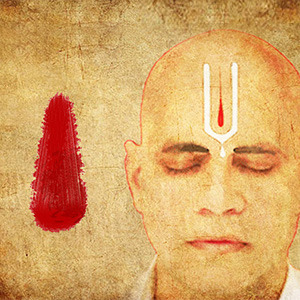
It's basically for strength, bravery and victory
The main difference in a bindi and tilak is the intent:
Bindi is for beauty
Tilak is for valour
Which. For a HERO. Just. Chef's kiss.
2. the markings around his eyes!!
I'm sure this has been said before, but it's very very reminiscent of kathakali makeup.

Regionally there's a lot of eye makeup stuff also btw. There are some absolutely beautiful tribal designs and regional designs with a lot of colours but I cant remember specifics rn
Also!! The very distinctive black lines around Pav's eyes?? I love them sm bc they feel so so based in kohl and kajal. Another huge beauty and often pride related thing.
There's even a whole thing where a mother or older sister will often rub a bit of her kohl off on her fingertip and press it behind their loved one's ear so that "buri nazar na lage" (no one's bad gaze catches you). It's called a kaala teeka
The idea being that you're so beautiful and/or cute and bright and lovable and nothing should jinx that and nothing bad should happen to you. It's very rare now and I've never experienced it myself but it's so so precious <33
3. the white markings on his cheeks!
I've seen that explanation of how it's reminiscent of Ganesha, the elephant headed god who is kind of a symbol of new beginnings, intelligence, prosperity, and a ton of stuff I don't even know how to explain honestly, but he's very cool and beloved and has a lot of Good Vibes™ and i love him basically.
I personally am reminded more of kathakali makeup again!! But that explanation is very cool too and i like it!! I don't know if I agree bc i think it m i g h t be a blasphemy to have that imagery on your face, afaik no one here does it for any reasons and we have literal festivals and pujas dedicated to Ganesha
But then again I am a human with limited knowledge and i don't know everything
I personally think the tusk like designs are very cool. However, I also think it would be a bit of a No No for religious reasons. I also think it reminds me more of classical dance face makeup and stuff.
I also think if they meant to make it a Ganesha reference, then he should only have a tusk on one side, bc there's a huge deal about Ganesha being "ekdanta" (transl: one toothed) bc he has a well known myth of breaking off one of his tusks to write a mythologically and culturally significant epic.
There are also a lot of actual cultural face painting things in India that are way cooler than the Ganesha thing in my opinion. So while that theory is cool, I don't personally agree with it. I could be wrong, again, idk what the design intent was exactly.
No. 3:
Next thing: this is a very very small thing and i only have a sentence on it, but i really appreciate Pav's neckline in his suit.
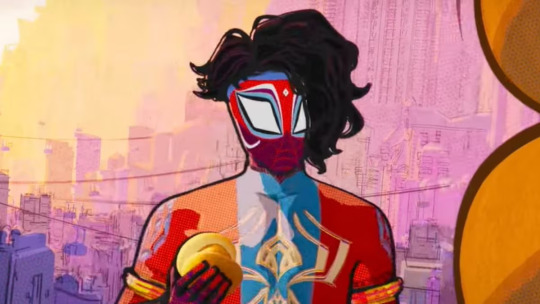
The neckline here? That's the kind of cut that's most typical of kurtas. Especially more ceremonial, kingly, wedding sherwani, or generally festive attire; a regular kurti might have a v-neck or something, but this curved collar? Very Indian and classy in a way I can't fully explain.
No. 4:
This next thing I'm going to go completely ballistic about, everyone hold on to your seats!!!

THE FUCKING MOTIF ON HIS UPPER ARMS. IT'S EVEN ON THE MEHENDI-ISH PATTERN ON HIS WRISTS AND HANDS. THE SPIDER SHAPE TOO. I AM NOT NORMAL OKAY
LISTEN.
LISTEN TO ME
TBIS IS CONFIRMATION THAT KRISHNA PAVITR IS CANON
HE IS SO SO KRISHNA CODED
Idc if I'm delusional, i DARE you to look at that blue design and tell me it doesn't look like a peacock feather
THE SHAPE OF HIS FUCKING SPIDER IS OH SO SUBTLY CURVED TO BE PEACOCK FEATHER SHAPED TOO
There is no human way for me to be normal about this i need a minute
Okay for context:
Krishna is a very important and beloved god in Hinduism. I cannot overstate the love I have for him, even being mostly non religious myself.
There is SO MUCH about him he is such a big deal and thanks to him being made a character in popular Indian cartoons and so many animated and live action movies being made about him, he is literally woven in the fabric of our collective consciousness and love for our culture
He's a mischevious and fun and chaotic and lowkey antiestablishment kid deity. He contains the literal universe. He has a deep abiding love for his people and his family and loved ones and the world he serves. He is a dancer, flute player, sweetheart, lover of life. He has a thousand wives, yet one Radha who he never married but is his literal immortalized soulmate. He guides heroes to duty. He is full of wisdom but also silly hijinks. He is so so beloved.
The peacock feather is his symbol! You could see the peacock feather anywhere and it's immediately OH KRISHNA! He wears a peacock feather, famously. In all his iterations, from childhood to adulthood. Peacock feather is his emblem.
Krishna is depicted through the peacock feather. It's become a very common motif in arts like mehendi and various textile arts to have peacock feather and peacock patterns; I'm sure that existed before Krishna too in several cultural circles but he is definitely a huge part of it since. There is a chikankari motif that is very recognisable that's reminiscent of peacock feather but I'm mostly unsourced on that, going off my own interpretation
But there's a definite link between peacock feather=Krishna=inextricable part of culture and art.
At least in North India. He's less of a big deal the further south you go. Still very widespread and overall loved tho.
So anyway seeing that peacock feather type motif on Pav?? Mixed with his Spiderman identity??? Is so amazing to me.
Krishna coded Pavitr real ✨

(Also yeah people have already pointed out that Pav's hand designs are based on mehendi so I don't need to go into that askjasjkas)
No. 5:
Also. Huge fan of his arm cuffs. It's just another Indian warrior thing; often in ye olde times and in mythology, the cuff would be a lot simpler, often just a thread with an amulet to grant you protection. But it steadily became fancier, and now it can be decorative or a valour thing or both
Very often just decorative now actually. Often seen in weddings and ceremonies too
No. 6:
Okay about his bangles now:
I absolutely LOVE THEM I love them so much I am so obsessed with them actually!!
So. First of all
I remember there being a confusion in like earlier fics especially on whether they were bracelets or damrus or bangles or what
And i have Thoughts
So first of all
They are not damrus/damarus.
Damarus are a musical instrument made of wood and with two beaded ropes to beat on the small drum-like ends. They're also symbols of lord Shiva who uses a damaru.
They are very different from what Pav wears and i remember my fucking whiplash when earlier fics called his bangles damarus. I think i choked on my maggi.
I don't mean to be rude to the writers ofc, they were doing the best with what they knew. But it's just very jarring to me to hear that
I think an explanation I heard was that Pav's web shooter design was inspired by damarus? Which yeah I get that and I actually wanna talk about it bc I very much see it. But they are very much NOT damarus themselves
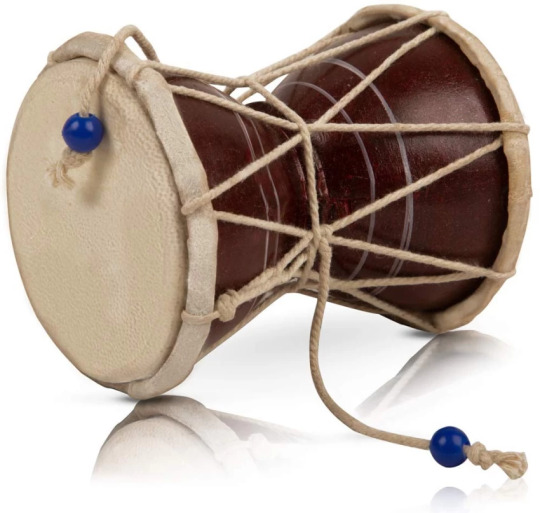
So
First of all i personally have never seen nor heard of the kind of bangles Pav wears which appear to have a strip of cloth in the middle? While being gold cuffs on both ends? Which is new and interesting actually and opens up aspects abt his character that i find really interesting
Bc first of all: that implies he made them himself from stuff he already had inspired by things he saw. It seems, at least to me, like he used bangles/kadas he had to make the shooters he uses, which are designed the way they are for easier slinging and his cool tricks with them which would be harder if they were solid gold, and also the shape when he does the cool yoyo-y trick and hits The Spot with it and everything is very damaru shape. Which is also pretty cool if it's meant as a reference to Shiva and his damaru (he's a very fierce god with the damaru) or a reference to the street performers who use it nowadays.
Either way - and also additionally the fact that PAV LITERALLY DOUBLED HIS BANGLES AS WEB SHOOTERS WHICH IS SO CREATIVE AND SMART - and developed his own whole signature skillset with it?? And made his own bangle/shooters as I said before????
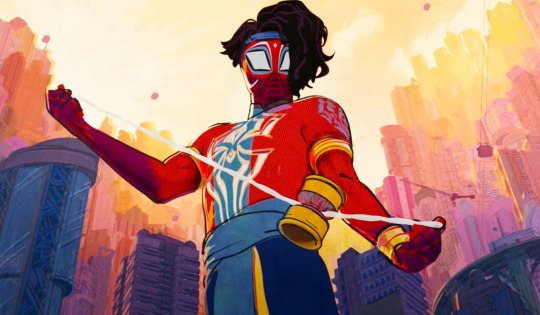
My boy is PEAK jugaadu
He is the embodiment of jugaad
Never has anything been so true to the Indian spirit than jugaad
Okay so for context, the jugaad that I keep talking about:
It basically means makeshifting and/or inventing stuff you need from the limited stuff you have. That's a very simple way of explaining it. Just imagine that, but up the silliness level x100.
For example, a guy jugaaded a showerhead by poking holes in a sprite bottle and putting a hose in it and routing it to the tap.
Jugaad can be both very smart, and very funny and silly
And it usually involves combining useless stuff/trash/just stuff you had lying around to make smth that you didn't wanna waste money buying, and often ends up having more functions than the stuff it was meant to replace. This but it's also very crackheaded. Like idk how to explain. It's basically makeshifting, but it's just developed into such an Indian Spirit Thing™ that we have a word for it
So i love that Pavitr's bangles do all of that. He is a true Indian boy to his core!
No. 7:
Okay I have thoughts on his dhoti too!
So.
Blue.
I know why they used blue for his dhoti, what with the spiderman colours, the need to complement his bright red with smth softer, and everything. I get it and i love it so so much. What I'm about to say next is not a complaint against this at all, it's very good design imo
But.
Everytime I look at him in his fucking blue dhoti
I just remember all the times my grandmother has apprehended me and made me go and change for trying to wear blue or black at a Puja
Bc they're apparently unholy colours ;_;
Basically yellow, saffron, red are the appropriate holy colours. Now that i think about it, I've never seen a god or mythological king depicted in a blue dhoti or generally blue clothing either - farthest they go from the three i described is pink or green
I never really thought about it until my Nani pointed it out. I'm still not sure if anyone except her even knew or cared about it.
But that is the memory that bonks me on the head every time i Perceive the blue dhoti
Bro upgraded from funeral colour (white, which is his dhoti in the comics and absolutely infuriates me on a visceral level) to unholy colour askaskjjska it's so funny to me
Purple was still a luxurious colour, but generally warmer and/or lighter colours are The Done Thing. It's an old notion and the cultural connotations are now very diluted by Western influence and also none of us Caring about a lot of it anymore (not necessarily a good or bad thing particularly)
Indigo also has. Loaded connotations.
Because Britain did a Colonialism and a lot of Indians suffered for it. It's a whole history lesson.
I would rather not get into the whole details but basically Indigo (the plant from which the dye was made) was a valuable commodity and Britishers essentially forced farmers to grow only that, ignoring their need to grow food or sustenance or care for the land in general, especially in the Bihar-UP regions. There were eventually a lot of revolts where many people, esp farmers, died.
Basically a double whammy of starvation and death as a direct result of colonialism. It was a major part, historically, that sparked rage for the freedom movement
If you wanna learn more abt it you can search up Champaran farmer revolts!
Also about the drape of Pav's dhoti:

I've seen a couple of memes and reels abt how Pav, in an emergency, suiting up for Spiderman duty, would be taking an hour to drape the dhoti and stuff
And those are hilarious and i love them
But also
That's literally not even a proper dhoti -
So the thing pav wears is basically more of dhoti-pants with a cummerbund.
So okay I need to explain this better hold on
A dhoti is basically a sheet of fabric that is draped around the waist and down. The elaborateness of the cloth can vary vastly from intricately patterned silk and brocade, to plain white cotton with a thin gold border optional
The drape of the dhoti varies even more depending on region, occasion, occupation, and status. You can have everything from the casual simple towel like drape and tuck that some men wear to relax on a daily basis, to an intricate thing with many folds and pleats and tucks and the middle part that hangs (I forget the name for that) that would actually legitimately take hours and is often adorned with jewellery . To a thing that's flexible to move in and also looks very pretty and is genderneutral some dance forms call for.
Basically. The drape varies vastly. And it's all one cloth, maybe a second one for a separate cummerbund sometimes, I'm not that well versed abt dhotis tbh.
But the thing Pav wears?? It doesn't seem to me to be folded the way I've ever seen any dhoti
The way it's folded and shaped is not how those style of dhotis work. There would be a lot more pleats and folds, for one. But it's not shaped the way to match the less-folded dhotis either.
Now, I'm no dhoti expert, but that leads me to believe that's not a full on dhoti. What it's more likely to be is dhoti-pants
Dhoti pants are this fusion thing. It's in the name. I haven't seen it much but I know/think/am pretty sure its a thing, bc most Indian guys now don't know how to drape a dhoti either and it's a good solution. Worn like a pant, looks like a dhoti. Simple. A cummerbund for the middle drape, and you're set!
Also side note: the fold with the distinct two legs and the middle drape that Pav has? Is the most commonly depicted warrior and king drape,, at least in North and Middle India, I'm not as well versed about the South but I think it's the case there too. The gods are depicted in that drape too
I have fewer comments on his leg design, I like that it's reminiscent of mehendi even on his feet bc yeah that's also done on the feet, although rarer now and also a bridal thing
No. 7:
He has gold cuffs on his ankles that I really like!
Okay so here's the interesting thing:
I could be wrong, but
But that kind of thick ankle cuff is not actually an Indian thing?? At least not in the warrior hero context that a lot of his design seems based on. At least not of that shape and width.
What we do have though are very simple metal ankle cuffs put on (I think) one ankle of young kids for protection,, again a tradition I'm not very familiar with, it's more localised
The other thing we have that's more interesting tho:
We have payals and ghungroos!!! Which opens up so many exciting prospects to me because those are both dancer things
Like. The payals are ornamental. They are beauty things as well. All women would wear them, their elaborateness and style depending on status, money, and region ofc
They double as dance and performance things too ofc
But ghungroos are specifically dance things
Very very sacred and honoured to the dancers, too. Quite personal
(These are all little bells on the ghungroos btw!! Hundreds of them. They ring out when the dancers dance)
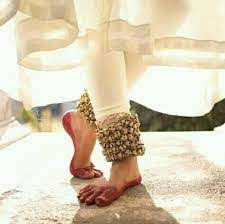
This is what Pav's ankle cuffs most remind me of. It's not the same thing ofc, and idk if the designers were even thinking of this.
But it would be really cool if he was inspired by ghungroos to have cuffs of similar thickness and placement on his legs. Perhaps even familiar to him hmmm?
This is me theorizing HARD to support my headcanon, but combined with Pav's classical dance-n-martial-arts-y moves, i present to you: Pav learning classical dance when he was younger (a thing that a lot of Indian kids do and only a few seriously continue for their lives) is real.
I rest my case
Like yeah it's known at this point that Pav's moves are based a lot off the martial art of kalaripayattu. Which is SO AMAZING AND I LOVE IT SO MUCH!!! But I also think this would be a cool influence alongside that, bc it really feels visible too.
No. 8:
The fact that Pavitr is barefoot is so so important and dear to me!!!
In Indian culture, you're supposed to take your shoes off as a mark of respect, before entering the ranabhoomi (literal transl: battleground, but not in an actual war with swords and shit ofc)
Being barefoot for pujas and in temples and on sacred ground in general is very important
As is being barefoot when you're walking onto a kabaddi or wrestling ground,, basically any fight that's supposed to be important and/or with honour. It's a respect thing for the opponent and for the earth you fight on.
There are a lot of contexts where being barefoot is important or a given
There's the prayer ground bc it's sacred and holy and you can't be dragging your dirty ass shoes there it's super disrespectful. You gotta enter with clean feet specifically, dirty feet are considered disrespectful too. that's also why there wil often be feet washing areas outside of temples here
Then there's the ranabhoomi that I just said, which is more of respect for your opponent and the earth. Respect to the earth especially is very important in the combat forms and sports I know of at least
Then there's the basic respect and tbh the hygiene thing too, of always taking off your footwear before entering another persons house. That one is more flexible, sometimes you can take it off inside, but the done thing is to take them off outside generally. Especially if you're a guest who's not particularly close. You'd be considered really rude if you didn't take them off at all. But again that still varies by person,, the older generations are way stricter abt it
Then the bride thing,,, it's actually a whole small ritual. The bride and groom will enter the groom's house for the first time,, which is considered the bride's new home bc misogynistic tradition so yeah. But basically it's supposed to be an auspicious beginning to a new home and life. (Btw being barefoot during the wedding ceremony is also generally required)
Usually, at least in North Indian tradition, a small vessel of rice is kept at the threshold that the bride must tip over with her foot when entering. It's for prosperity. Then she steps directly into a plate of a red liquid I forget the word for, but it's basically a sindoor paste type of thing. Her first steps into the house must be taken leaving those red footprints behind. That's for auspicious beginning
So Pavitr being barefoot is so so cool from a cultural and a character building standpoint
He takes his job seriously, he does it with respect and honour!!! He seems so chill and happy go lucky, but he's deliberate and respectful abt it!! And he's super connected to his culture too, bc you could just Not and no one would care, but it's so important that he does!!
So yeah!
That has been my full ramble askjasjkas. If you made it this far, have a cookie! Thank you and I hope this was interesting <33

#pavitr prabhakar#atsv pavitr#spiderverse pavitr#spiderman atsv#across the spiderverse#spider man: across the spider verse#character design#rant#starr rambles#analysis#design analysis#character analysis#culture#indian culture#cultural references#pavitr my beloved#myths and legends#chaipunk#goldenpunk#spiderman india#india love#indian#long post
441 notes
·
View notes
Text
GUYS
I just had a thought
It's always been about dual sacrifice, but I don't think Loki really knew that.
Look back at episode 1 where Loki and Mobius are addressing Loki's time-slipping. If Loki doesn't prune himself in time, he's lost to time, if Mobius stays out there too long, O.B. says that he'll gradually age and get his skin peeled off.
When Mobius and Loki bicker about it, Mobius tells Loki he would rather violently rip himself from the timeline
"At least you get to live."
"Live? What's the quality of life with no skin?"
Obviously it's played for laughs, but it can have a lot deeper of a meaning. If Loki didn't make it back then, we know that Mobius would've stayed out there. Loki (wrongfully) assumes that Mobius would be able to live through getting his skin peeled off (god logic ig). But he wouldn't have. If Loki didn't make it back, neither of them would've.
Applying that to the finale, Loki assumes that his actions will let everyone (including Mobius) live. And he's right this time actually, Mobius does live-
But what's his quality of life?
He doesn't feel like he can stay at the TVA. He can't go back to his family. He's completely alone.
Just like Loki is.
Dual sacrifice, and in both instances Loki didn't realize that Mobius would go down with him too. He thought Mobius would just be able to go on with his life.
But he can't, neither of them can. They're connected. Look, his name is literally Mobius M. Mobius. They're both burdened with the weight of eternity. Forever conjoined, but always separate. All either of them can do now is just "let time pass."
Very poetic and sad.
#i feel like I'm cooking something here#like there's probably a more in-depth analysis I could do of this#also this is sad but really based in mythos#most myths are tragedies#loki#mobius#lokius#loki season 2#loki season 2 spoilers
370 notes
·
View notes
Text
…so I’ve made some connections
(spoilers for all of TMA and TMAGP (as of Episode 15))
Lady Mowbray seems to have a lot of visual similarities to depictions of Scylla from Greek mythos. A woman of violent power with hounds at her hips and a taste for human flesh. The resemblance is uncanny, even with the added flavor of her being a capital-L Lady.
It’s interesting to me to see how the “fear powers” we’ve been introduced to so far in Protocol’s universe seem to have connections with Odyssey antagonists.
- Lady Mowbray aligns with Scylla
- The Sea (the Vast/Buried amalgamation from Ep. 11) aligns with Poseidon/the ocean (or possibly the Sirens)
- Mr. Bonzo aligns with Polyphemus
- The tree from Ep. 3 and the snakes from Ep. 14 align with Circe
- Needles seems to align well with Charybdis
- The starving crowd from Ep. 8 aligns with the Lotus Eaters (or possibly the Sirens)
Heck, even the Man on the Screen from Ep. 5 could align with the Oracle and the traveling merchant (responsible for the violin in Ep. 4 and (probably) the dice in Ep. 9) could align with Hermes (though I would hesitate to call either the Oracle or Hermes antagonists). Which leaves Ink5oul, the volunteers in Ep. 7, and the gambling app from Ep. 13 without any solid equivalents.
To be fair, I think basing all of TMAGP’s antagonists on a single epic may be too small-scale and isn’t enough for a solid theory, but the connections are interesting to dissect 👀
#the magnus protocol#tmagp#tmagp spoilers#tmagp 15#rambled analysis time I guess#with all the conclusions and none of the evidence to support those conclusions 😭#still. the vibes are Strong#the dice and gambling app are probably their own separate entity#don’t even get me Started on what this could mean for the OIAR goons#or how Celia might be aligned with Calypso#that’s a stretch at best though#magnus protocol#I love how this only makes sense if you have my exact level of knowledge and experience with Greek myths and nothing more 😭
115 notes
·
View notes
Text
currently thinking about how ages ago my friend sent me a long-ass explanation about why saltburn is an adaptation of the myth involving theseus, the minotaur, and the labyrinth.
nobody asked but here’s some of the fun proof that exists of this:
first and foremost, icarus, the boy who flew too close to the sun. during the party scene, it is evident that felix symbolises this poor ill-fated youth, and the symbolism here is potent. he flew too close to finding out what oliver truly is. he discovered something he shouldn’t have, and dressing him up in icarus cosplay is the perfect showcase for his fate and his mistakes. it’s also brilliant in terms of what icarus actually did to “deserve” death. realistically, he was told not to go too high or too low, but in actuality, such cryptic instructions were difficult to follow mid-flight, and it resulted in catastrophe. felix is trying to navigate the responsibilities of being a good friend with his baggage as someone in a family of rich pricks. it’s hard, and in flying too far away from his background, he “flew too close to the sun” and discovered things he shouldn’t have. as a small nod to further the icarus imagery, felix’s body is discovered under bright and direct sunlight as he lays motionless in his winged costume.
secondly, saltburn is in the center of a labyrinth. the labyrinth lore runs deep in this movie, because not only does the labyrinth function as symbolism, it has lore that runs adjacent to the lore of the actual labyrinth. in theseus and the minotaur, the labyrinth is a construct of greek architect and inventor daedalus, who was conscripted by king minos to create the maze. in saltburn, the labyrinth is constructed upon special request from james catton, the owner of the estate, and a very wealthy man (almost like a modern day king).
the labyrinth (in the original myth) is dangerous to all characters that reside within it. it keeps all in within a chance for escape, and those that get close die tragically. in saltburn, the labyrinth functions as an ode to the ways in which riches and fame poison those that reside in the walls, keeping them locked within its dangerous talons, or in this case, cleanly trimmed hedges. it’s suburbia on a larger and more internal scale. even those that do not have riches themselves, namely farleigh and annabel, do everything they can to remain on the estate and in the good graces of those on the property with immense money. it affects how they act and how they are expected to act. farleigh, as a good example, is very stuck on the particulars of rich people’s behaviour. as mentioned above, those that try to leave the maze die tragically, and icarus is a prime example. felix, in his attempt to be better than the riches of the estate socially allow, flies too close to a possible escape from the confines of the labyrinth and is murdered as a result.
in the story of the labyrinth, it is unsolvable, unless you are clever and quick witted (manipulative), which theseus luckily is. the same is true for oliver. oliver, like theseus, gets into the heads of multiple characters, manipulating his way to the top of the food chain. the scene where oliver views the wooden counterprt of the maze through the head office in the estate, he is told that he shouldn’t be there, and a sense of ominous foreboding takes place. we feel that he has seen something that will change him. however, i believe this is simply symbolism for the fact that oliver has figured out the secret to the maze: a secret that he, an outsider and a poorer, less sociable man should not be aware of, as he is a representation of theseus, a character who has no right being king.
thirdly, oliver is juxtaposed with imagery if the minotaur during the party scene, and though this costume doubles as a reference to the changeling in a midsummer night’s dream, it is still highly important. in the original myth, people are sacrificed to the minotaur on a yearly basis. at first, felix fits the profile for the minotaur: a rich, wealthy man in a labyrinth who is regularly described as going through friends the way a young boy would go through toys. it is also true that the minotaur has often been seen as a controversial figure, one that begs the question “is a monster just a tormented creature fated to behave according to the will of the gods?”. felix’s behaviour, or namely, his attempted deviancy from the behaviour he is expected to show, is a major prt of his character arch. we expect oliver to be the victim of felix’s behaviour exactly because of this. but he isn’t. an easy explanation is that oliver is the minotaur, going through the family members as though they were victims in a maze. however, oliver is NOT the minotaur, as the myth is a lot more complex than the minotaur being the bad guy. despite what we expect, director emily fennel is leaning into the concept that the minotaur’s storyline is that of fate versus free will. the minotaur is cursed by the gods to fall into certain patterns and to be punished for its behaviour, despite it doing exactly what was expected. felix attempts to deviate from what is expected, but ultimately he fits in well with the rich and social, and his death is a punishment at the hands of a sort-of theseus who believes he is more deserving. rather, oliver is also seen to be theseus, who famously invaded the maze, manipulated its dwellers in order to navigate it, killed the minotaur, and then manipulated his way into becoming king as a result. sound familiar? it is because of this that the imagery of oliver as the changeling is particularly important. the horns can be evocative of the minotaur, offering us a red herring, where he is truly disguised as the opposite. it’s a fake out.
fourthly, king minos (owner of the labyrinth) did not die directly at the hands of theseus, he did eventually meet his downfall and was boiled to death in a bath. james catton, head of the estate, dies of a supposed suicide, also not directly by oliver’s hands, but still implicitly connected to the events of the story, much like king minos�� death.
the lore in this film is incredible, and though emily fennel has not said that the film is an adaptation of greek myth, the parallels are deliciously undeniable. saltburn is fascinating, and truly one of the best films of 2023. there is so much stuff jam packed into it, and it’s one of those films that takes a few watches to fully grasp its depth. i love it!
#saltburn#felix catton#oliver quick#james catton#farleigh start#venetia catton#elspeth catton#annabel#theseus#minotaur#theseus and the minotaur#the labyrinth#king minos#princess ariadne#king theseus#capitalism#the saltburn estate#the bathtub scene#icarus#icarus falls#felix saltburn#beautiful symbolism#symbols#symbolism#so much symbolism#greek myth#movie adaptation#film adaptations#saltburn movie#saltburn analysis
67 notes
·
View notes
Text
reading through the main story again and man now i have some thoughts™ about Dante & their characterization
in canto 3 when they were talking to Vergilius near the beginning, he referred to pre-clock Dante as a “bigwig”. and when they were being attacked in the prologue, lion said something about not getting a second chance to kill someone of this caliber. so. it’s obvious they used to be someone important
they were probably mean!! an asshole!!! i wouldn’t be surprised, with what Faust said in canto 4 about wondering how they would react once they had their memories back, after they told the sinners to suppress the brazen bull
also these lines, when they were talking to Lion, Wolf, and Panther in the prologue:
“You dare… interrupt me just as I was engraving the ■■■■■■… You must be out of your…”
“Kngh… Just wait ‘til I get the ■■■■■■… You’ll be no match for my…”
makes them sound kind of full of themselves. VERY confident in whatever plan is being enacted here. they’re hot shit and they know it
this city is Fucked Up and i’m sure, regardless of what kind of position Dante had before, they had to climb over a few shoulders to get there
and then post-clock Dante. complete blank slate. they don’t know shit about fuck. the “nurture” of their personality has been wiped clean, free of the city’s influence, all that’s left is the “nature”, who Dante is at their core
and they’re NICE
at the end of canto 3, everyone is dead, Dante themselves is dying, and what they decide to do in what could’ve been their last moments is to comfort Sinclair, to tell him that even if everything that happened was his fault, he shouldn’t beat himself up about it
and then in canto 4 when the sinners are talking about how convenient the healing ampules are, they mention that Dante only heals them after they’ve died. “scared of a little hurting”, as Ryoshu put it. and then when Ishmael gets hit by that decay ampule they’re, understandably, worried about her. everyone standing around talking about how fucked up it all is and they’re the only one who really gives a shit about Ishmael melting to death
Outis is like “Ah, apologies for my negligence, Executive Manager. I failed to consider the suffering you must endure when you turn the clock” and then Dante is like. that’s not what i’m talking about. and the moment Ishmael shows fear they immediately rewind the clock to heal her even though no one’s died yet
anyway. all that to say—i love you, dante. i love you, choosing to be kind. i love you, inherent kindness of human beings

#limbus company#project moon#myth posts#posting this and then running away like a startled rabbit#i don't usually do character analysis or whatever and less often do i post it somewhere public 🙈
267 notes
·
View notes
Text
So, my girlfriend discovered that the names of the Nightsister “Mothers”, are different spellings of the Fates in Mythology. This is fitting since the Fates are quite literally “weaving” everyone’s fates and are in control of their paths, similar to Nightsister Magic.

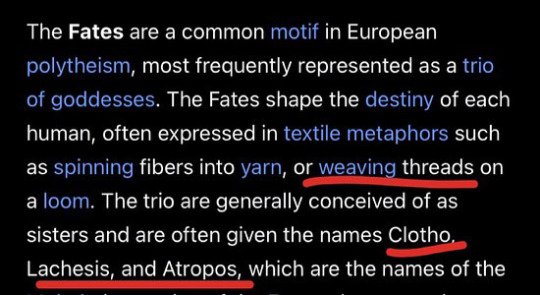
But there’s more.

The witches (the fates) are the ones to pull Sabine away, entrapping her with magic and pulling her away. Away from Shin.



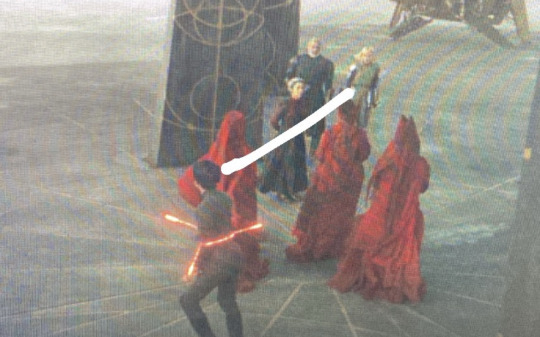
As sabine turns her head, it’s easy to think she’s looking at Baylan, perhaps frustrated with their agreement becoming more shaky—but look at the bottom. Her eye-line is directly aimed, lined up with Shin. In the last frame, what are they separated by?
The fates.
We also see that Shin looks at Sabine, around the same time that Morgan does… almost as if she’s trying to be protective of her? And where else do we see this?


Both on the ship on the descent down, and when Shin first brings her on the ship. It’s almost like she’s getting between Sabine and Morgan… Morgan is a Nightsister as well. She’s very close to the fates that are pulling them apart, which is quite literally referencing classic mythology. Shin seems to be protecting Sabine from Morgan, and Shin has stated on multiple occasions that she seems to have a distaste for Nightsisters (with her lines like “more witches?”)

Shin and Sabine have been torn apart by fate here, literally. It goes with every mythological story, and reminds me of classic tarot cards. In my opinion, Sabine and Shin represent the lovers—quite literally torn apart by fate.
The Fates, in the form of the Nightsister Mothers, have torn the lovers apart with magick (similar to the threads of fate that are woven in mythology). Shin and Sabine fit the “lovers” type a little too well. Especially with how concerned Shin has looked in the past… it’s like she knew. It’s like she’s aware of their uneasy fate, and she’s doing whatever she can to prevent it.
Sabine and Shin are the modern Star Wars equivalent of the lovers, and they’re beginning to realize it themselves.
#credit @ Sithsandstardust for the screenshots#and the insight#I love my girlfriend#star wars#sabine wren#shin hati#sabinewren#sabine x shin#sabine wren x shin hati#sabineshin#shin x sabine#shin hati x sabine wren#shinhati#the lovers#the fates#mythology#mythical#myth#tarot cards#analysis#film analysis#theory#film theory#wolfwren#wrenwolf#shinbine
152 notes
·
View notes
Text
Analysis of shipping: Found family and pseudo-incest?

Last year I was requested this rebuttal to detractors, but it took a long time to make because it was hard to pinpoint where these arguments came from
But, after one perceptive individual nailed it right on the head, I finally had something to work with
So, let's start with the argument: "These characters can't end up together because they're like family/siblings, so that would be incest"
This isn't unique to one single fandom. Antis had used this reasoning against NaLu and similar pairings in the past, based on the fact Natsu and Lucy belonged to the same guild, a community that treated its members as "family"

Needless to say, they stopped using it after seeing how Mashima made pairings like Gajeel and Levy, or Gray and Juvia, pretty much canon. Making it clear that romantic relationships between members of this particular circle or community were perfectly fine (That doesn't mean cheating is fine though!).
But, this argument still persists in other fandoms. One Piece is not the exception, where the anti-LuNa crowd constantly tries to paint all romantic potential between Luffy and Nami as "incest" because they're "siblings."
Let us address something first, what's incest?
"Sexual intercourse between persons so closely related that they are forbidden by law to marry"
- Merriam-Webster, 2024
"Marriage or sexual intercourse with a relative within the prohibited degree of consanguinity. In other words, incest is sexual contact between close blood relatives"
- LII / Legal Information Institute, 2024
After 1000+ chapters worth of story, nothing implies Luffy and Nami are related by blood. So, where does the argument comes from?
In reality, antis are using a concept people don't often hear about: pseudo-incest
It's not a widely known term, in fact, it's not even in the Oxford English Dictionary (OEA), the Cambridge Dictionary, or Merriam-Webster.
However, we can still find some defintions that helps us to understad what do LuNa detractors mean with this?
"Sexual involvement between family members who are not blood relations (e.g., siblings by adoption, stepparents and stepchildren, in-laws)."
- Wiktionary, 2024
Once, again we hit another wall, since Luffy wasn't adopted by Nami's family, nor Nami was adopted into his. So, why do antis claim they're "like" siblings?
Let's go from the minor statement to the big one. The first argument is that "The have a sibling-like dynamic"
This is one is odd, because it can come from actual unawareness about the nature of relationships, or the malicious use of the common traits seen in all sorts of human connections
After all, all healthy relationships, either being with relatives, companions, or potential romantic partners, are defined by affection, shared values, support, and sometimes a little bit of discord and/or conflict
If we were to use these traits to label the connection between two characters as that of "siblings," we could describe a lot of official pairings (and potent relationships) from a huge lot of stories as "siblings" instead of lovers/spouses.
Let's use a potent relationship as example: Sabo and Koala feel affection for one another, share similar values, support each other, and may have an argument from time to time...

...does that make them "siblings"? What about Ace and Isuka? Does the combination of affection, support, and occasional conflict rule out any possibility of a relationship upgrade?
If we apply this "measurement" to official pairings from other series, we're likely to jump to similarly flawed conclusions about their relationships.
However, even if there are similarites, there are several differences. For bonds outside our family circle. we may see chosen affinity, sometimes a greater attachment and/or emotional codependecy, a strong passion, and even a deeper sense of compromise coming from the willing choice of those involved.
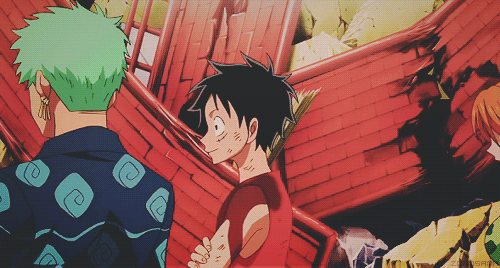
Potent relationships have all of this, even if they're yet to become canon. And due to their emotional chemistry, LuNa seems more like a deep companionship with the potential to evolve rather than a sibling-like bond

However, that was just the minor statement from western fans. We may deduce some say this because they can't picture a romantic relationship without one (or both characters) being a total simp; perhaps they're so used to the "loveable perv" trope, that their idea of romance relies how horny the characters act with one another; or maybe they just too enamored with the cool good-looking buff guy to acknowledge anything deep, but I digress...
Still, we're yet to address the elephant in the room, the bigger argument, which is a combination of two things:
Just like some anti-NaLu fans did ages ago, a lot of anti-LuNa fans take their "sibling" argument from the same place every other permutation of this reasoning came from, a misuse of another concept: Family of choice
Family of choice, Chosen Family or Found Family, all refer to a group of people who willingly stick together to provide each other with the sense of community and belonging, as well as a feeling of affection, joy and security inherent to a functional family, without being related by blood.
It's seen as an alternative to those who faced rejection from their biological family, or society itself, and even to people who lost their relatives to tragedies or disasters.
It's a useful literary device to develop characters due to how flexible it is, given that members of these groups don't need to fill particular roles for their relationships to work, which provides authors with a lot of freedom in terms of writing.
However, some detractors have been abusing the "family" part of the term to argue against pairings that have enough development and history together for a natural relationship upgrade. How?
By limiting each character to a specific role: Father, Mother, Sibling, etc.
This allows them to claim, that characters within "Found Families" cannot become couple because that would be pseudo-incest.
As some people already noticed, this makes no sense; it replaces the versatility of the trope with a far more rigid, static, and limited form of narrative; and goes against what the idea of "Found Family" was supposed to be, which is an alternative to "family," not a carbon copy of the traditional family structure.
So, how does this argument survives logic and reason?
Well, here's the elephant in the room: in the SBS Volume 48, Oda was asked the question: "If the Straw Hats really were an actual family, who would be the dad, and who would be the mom?"
The following was Oda's answer:
Dad: Franky (Thug)
Mom: Robin
First Son: Zoro
Second Son: Sanji (Punk)
Daughter: Nami
Third Son: Usopp
Fourth Son: Luffy
Youngest: Chopper
In the SBS Volume 50, Oda added Brook would be the "Grandfather" "If you Likened the Crew to Family".
Here we have another example of a quote taken out of context, because the question was 'if they really were an actual family', and Oda later framed his answer as "Position in the crew if they were a family."
It was never about the strawhats being "an actual family," it was merely mindless fun with a "what if." To drive that point home, Sanji still gets horny for both Nami and Robin, yet nobody in their right mind would accuse him of lusting after his "sister" and "mother," because they're not actual relatives.
And this leads us to a couple of plot twists: all of this started because of the song "Family" performed by the strawhats seiyuus which, while invoking the "Found Family" trope, includes the following statement:
"We're not relatives… we're not even siblings!" (親戚じゃなくて 兄弟じゃない)
Which pretty much kills the "they're like siblings" argument used by detractors to liken LuNa to pseudo-incest.
The second plot twist comes from the SBS Volume 99, Oda says that if the cew was an actual family Jinbei would be the "father," replacing Franky who would now be given the position of "pervy granny"
This proves two things. First, that such "positions" are neither "fixed" or "absolute," they're malleable and can be changed or altered at any given moment.
Second, that this "Family" thing amounts to a mere joke, it's just a silly little game with no real impact on the story and characters. Although the idea of Frobin Vs. Jinbin(?) sounds amusing, but I digress.
So, what's the conclusion?
Even if the strawhats are an example of "Family of choice," that doesn't make the greatest potential relationship upgrade within the crew problematic, it all depends on how the author handles the situation. And given Oda is a top tier writer, we got nothing to worry if he decides to pull the trigger
And, despite what huge players within the community said before, Oda never claimed the strawhats were "an actual family." So any accusation of pseudo-incest, whether subtle or direct, is just the result of general ignorance, misinformation, and/or personal agendas
BONUS
There are times in manga/anime when one character refers to another as brother/sister/sibling, despite not being related.
One example would be Winry from Fullmetal Alchemist, who claimed Edward is like a "brother" to her. However, given that they're not related, nothing stopped them from falling in love, ending up together, and having children...
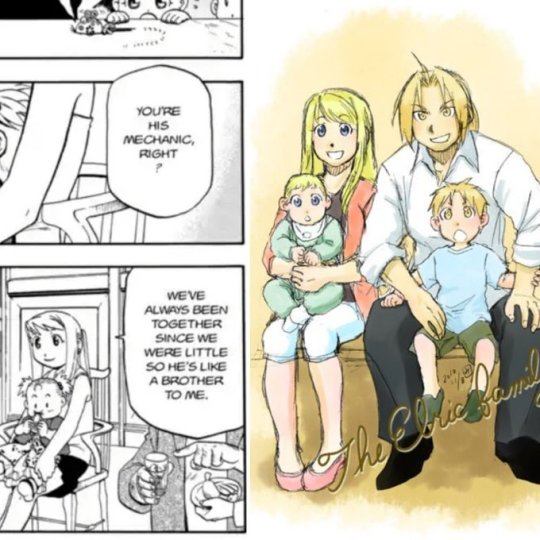
If we rely on the same reasoning used by antis, we could conclude this relationship is problematic. However, even if they have some moments when Winry goes ballistic on Ed...

...nobody in their right mind would dare to say their relationship is akin to pseudo-incest.
Oddly enough, we have a case in One Piece, when one character (Kinemon) made a similar brother/sibling claim to Tsuru, using a similar reasoning to that of Winry's...
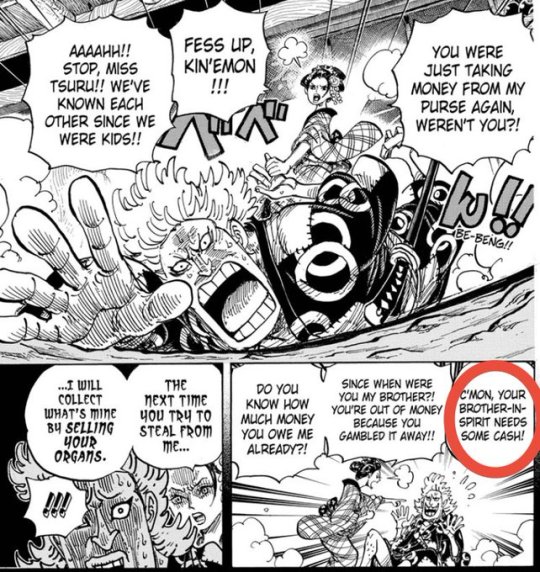
I'll give you three guesses on how these two ended up, the first two don't count
#one piece#fairy tail#fullmetal alchemist#analysis of shipping#analysis#found family#family of choice#debunking myths#ルナミ
64 notes
·
View notes
Text
Esoteric+Divine Composite: Suletta

Suletta's position as an amalgamation/twist on Miranda and Caliban is obvious along with Utena. But what are some of the lesser known? She's a character shaped with symbology ranging from norse and greek myth to alchemy. Fenrisulfr, Hercules, Hermes/Mercury, and the Red King.
Fenrir
I've already broken this down a bit in a previous analysis, and in light of the finale, she finally fulfills the Ragnarok prophecy.
The freed wolf who eclipses the 'sun', heralding an end to the Gods(Benerit and SAL)

And her method of devouring Odin Miorine is consuming her in holy matrimony as the new cycle of the world is born.

Hercules
This one might be a surprise, but it's true. Suletta is undeniably coded with Heracles/Hercules symbolism, beginning with his 12 labors. In the very first episode of GWitch, she slew the invincible Nemean Lion and 'skinned' his coat
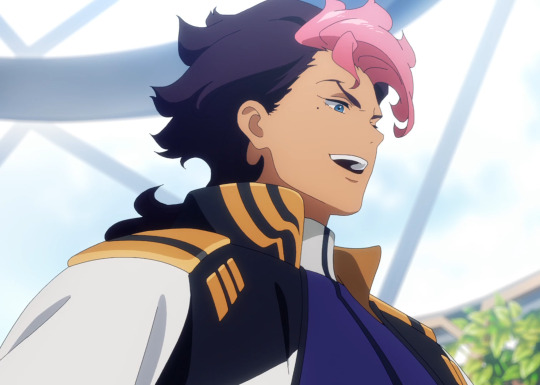
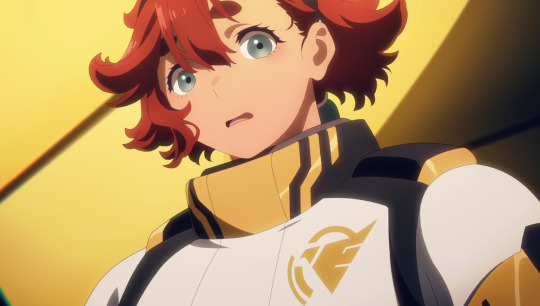
And her final labor is the subjugation of Cerberus, the multi-headed dog of the underworld.


Take note, before Hercules descends and encounters Cerberus, he's inducted into the cult of Demeter and Persephone. Notrette as Anesidora is revealed to be our Demeter, chthonic goddess of agriculture. And prior to this battle, Suletta speaks with the Persephone of our tale, inducting her within the mysteries.
You can draw other parallels between the various herculean labors and Suletta's duels. Such as the Grassley battles echoing that of the Hydra or Elan/Peil as the man-eating Stymphalian birds.
Suletta's godlike strength suddenly doesn't seem like an accident, does it?

So why was this done, other than for fun symbolism? The answer all boils down to Hermeticism, as it often seems to. Specifically this painting of Hercules, called Allegory of Wisdom and Strength

I'm unsure if it's common to interpret this image as another symbol of As Above, So Below but it's clear to me Okouchi has. We have Hercules focused on earthly matters while the greek personification of wisdom, Sophia, is focused heavenward. The light of enlightenment crowns her brow. Both are in frame and not in conflict; As Above, So Below. Coincidentally (or not) Sophia is one possible ciphered translation for Baphomet; a blatant esoteric symbol of perfect unity.
Mercury/Hermes
This is of course obvious considering its in her name, but there's one mythological parallel I want to highlight. The tale of Persephone/Kore. It was Hermes who descended into the underworld and retrieved the 'defiled' Persephone, escorting her safely above and reuniting her with her mother
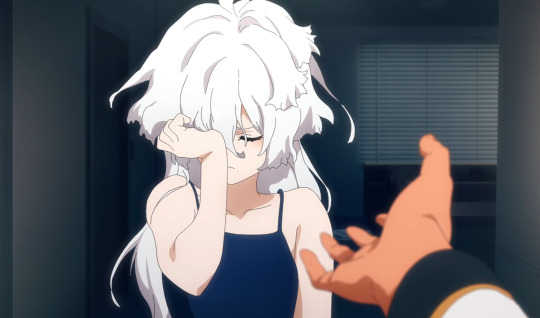

Suddenly, Shaddiq's dramatic comment about Miorine's defilement doesn't seem so off-color. They were intentionally harking to Persephone Mio who was taken by Hades, Prospera here.
The Red King
I've already discussed this a bit here, but let's recap. Suletta is derived from Soletta. Her signifying colors are Red and Gold as Holder, both key to the Red King. She was 'eaten' by a lion (aqua regia solution) before being reborn, her metaphorical sun blackened with despair (dissolving).


All of it culminating into a Great Work, banishing gundams, defeating SAL, and saving Eri; her Filius philosophorum (Philosopher's Child) All miracles.


Oh and finally married her White Queen ofc, though their union was cemented with a tomato by then. In GWitch's version of Theogony Hermes wed Persephone, accomplished the 12 herculean labors, created a philosopher's stone, and completed Ragnarok
Note: Considering the proper name of Fenrir, Fenrisulfr, Okouchi might've been trying to be cute. Sulfur girl indeed
#This is one symbolically rich tanuki#yes I used that screenshot twice I like it ok#g witch#g witch spoilers#suletta mercury#miorine rembran#sulemio#analysis and speculation#greek and norse myth#gundam witch from mercury#alchemy#hermeticism
183 notes
·
View notes
Text
Solving a 25 year old mystery...
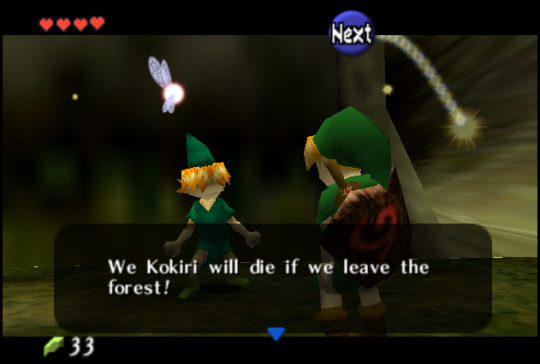
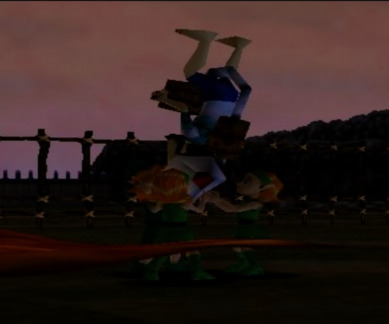

Very early on in the game, we're informed that if the Kokiri dare step outside of the forest, they will die. That's a fairly heavy statement, but it does line up with more lore that we end up picking up as the game carries on. Anyways, this forest is a secluded, protected and magical place, a small haven that is effectively cut off from the rest of the world.
As we carry on through the game, we learn that anyone who is lost within these enchanted woods--anyone who is NOT a Kokiri--will twist into one of two creatures: a Skull Kid if you are a child, and if you are an adult you will transform into a Stalfos. Why this happens is still a mystery, but one can guess it's likely connected to the Deku Tree's magic and the Kokiri being a vulnerable race. They're so precious to the Great Deku Tree; he views them as his children after all, and his children MUST be protected!
Makes sense, right?
So why is it, at the end of the game, we actually see a bunch of Kokiri outside the forest, partying it up with Guru-Guru at Lon Lon Ranch? They're spinning him on his organ grinder, and we even see a lonesome Mido situated next to a heartsick King Zora, both of them missing their special person.

Q: The Kokiri tribe is outside the forest at the ending. And the Zora too...
A: This is because Link's success has wiped out the evil forces, and the range of the Deku Tree Sprout protecting the forest has been expanded. The Zoras do not need to be immersed in water all the time. (Kawagoe, Cinema Scene Director).
And there it is! The answer to a burning question that many people have been wanting to know for twenty-five years now! The worst part is, this interview was published in an April 1999 issue of Nintendo 64Dream Magazine! We've had the answer to this question given to us only FIVE MONTHS after the game launched, and yet still to this day I think it is one of the most-asked questions about Ocarina of Time! Funny how things happen that way, huh?
[Source!]
...Aaactually, since I mentioned it...
Remember the cute little boy who is practically enamored with Dampé, the grave keeper? The one whose father you give the Keaton mask to and the very same child you give the Spooky Mask to?

According to this very same Dream64 magazine interview, this child ends up going missing before Link wakes up seven years later. In fact, five years after Ganondorf had invaded the sacred realm, this poor kid ended up taking it upon himself to search for his missing father, (the Hylian soldier stationed in front of Death Mountain's gate - the guy you trade the Keaton mask to!). Upon searching the forest for his father, he became lost and tragically succumbed to the forest's curse. He transformed into a Skull Kid at eight years old and apparently had an encounter with Link. He didn't bother to attempt communicating with Link, asking if he knew where his father was because Skull Kids don't trust adults. He attacked Link instead and I hate to think where that ended up.


Q: Where did the little stalker in the graveyard go when you were in your time (became an adult)?
A: Five years later, when he was eight years old, he wandered into the Lost Woods in search of his missing father and got lost. At that time, he became a Skull Kid. Skull Kid don’t talk to adults, so when he encountered adult Link, he just attacked him and didn't ask him what happened to him. (Koizumi, 3D System Director).
Grog is actually mentioned in this magazine, too... You know, the "People are disgusting!" guy? After we are given the medicine from the Odd Mushroom he had given us, we don't get to see Grog again. Instead, Fado appears and tells us that everybody who enters the forest turns into a Stalfos. Everybody. Stalfos. The dark and frankly unsatisfying conclusion to Grog's story, just after giving the poor fellow an ounce of hope, is quite jarring and it only left folks with more questions.

Q: What happened to Cucco Lady’s brother after he gave you the mushrooms?
A: Fado, the Kokiri girl who is waiting for you, is saying a meaningful message. "They all become Stalfos.” That's right, everyone who wanders into the Lost Forest becomes a Stalfos and lives in the Forest Temple. What? What about the human Link? Well, they are not Kokiri... Why is that? (Koizumi, 3D System Director).
While it's not a lot of information, we are given a piece of lore that gets my imagination firing off... Why would Grog--or any Stalfos--be drawn to the Forest Temple? Interestingly, if you show the Skull Mask to some of the Deku Scrubs, they will refer to the mask as looking like their "sacred forest totem". Could the Stalfos be related?

And for THAT matter... Why does the Skull Mask look so similar to Phantom Ganon's face?


#out of time. :: [out of character]#Land of Myth :: [OCARINA OF TIME]#Kokiri#Kokiri Forest#Skull Kid#Kakariko Village#Dampé#Dampé the grave keeper#Spooky Mask#Deku Scrub#Phantom Ganon#Skull Mask#Stalfos#Grog#Cucco#64Dream#64Dream Magazine#N64#Ocarina of Time#OoT#Analysis
32 notes
·
View notes
Text
Powerful women from the classical world + excerpt of a letter from Lord Byron to Thomas Moore describing his lover Margarita Cogni (Venice, September 19th, 1818):

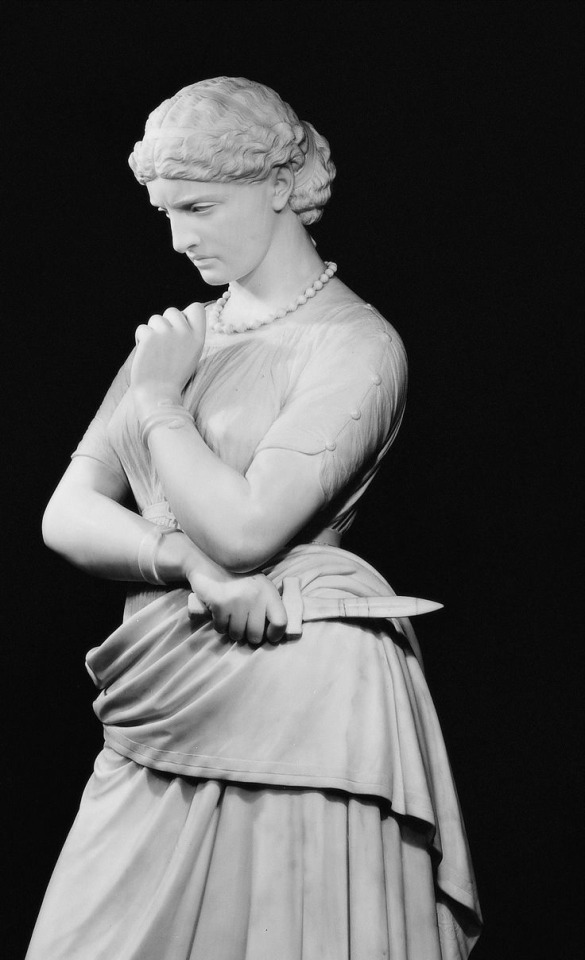
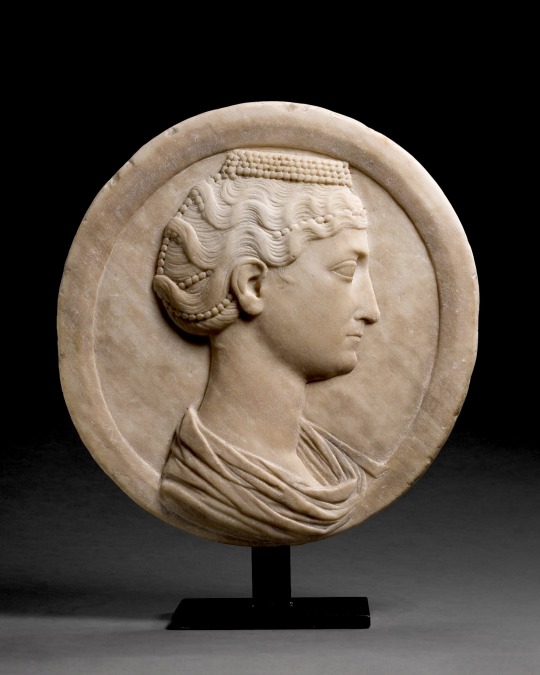
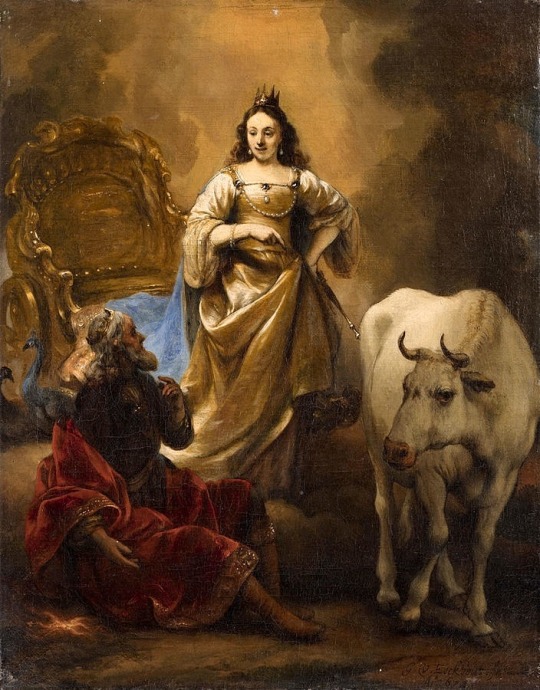
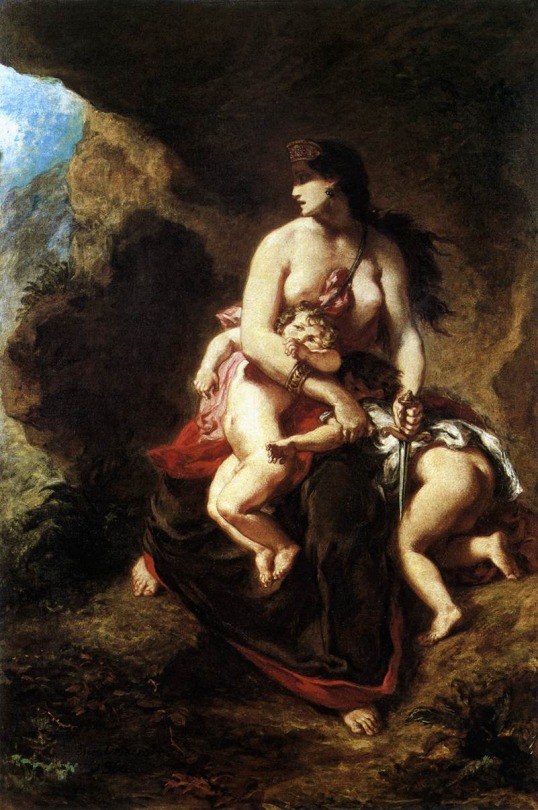
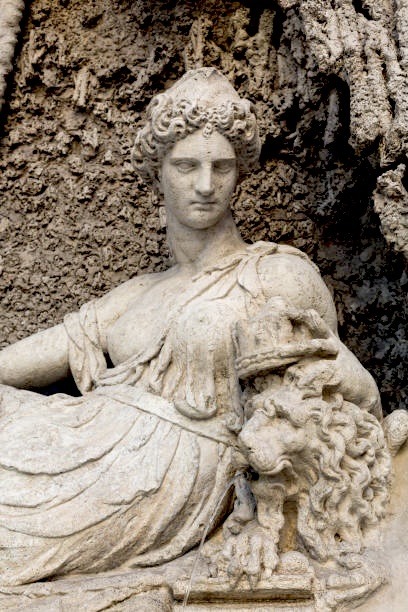
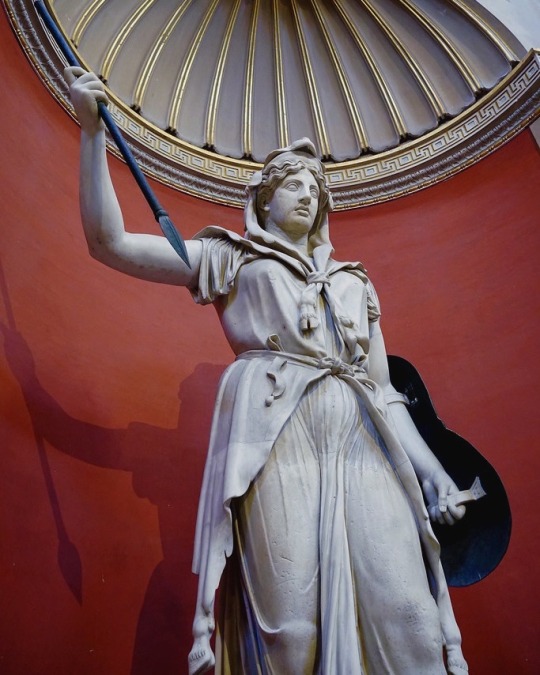
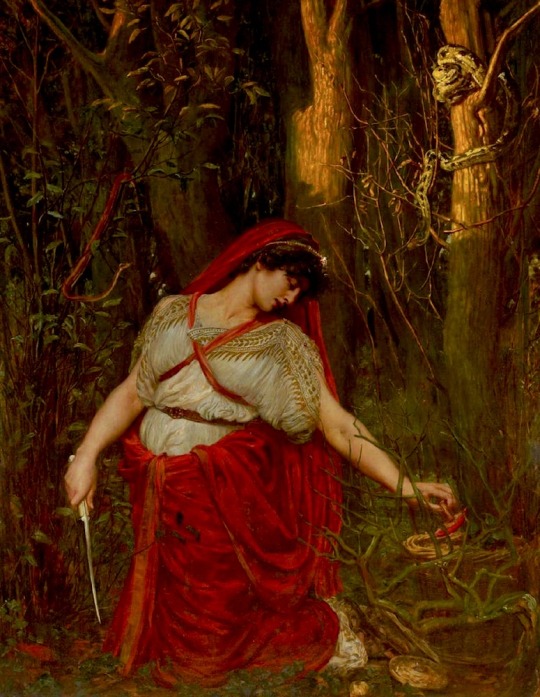
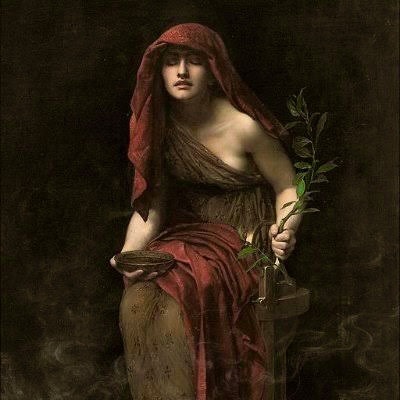
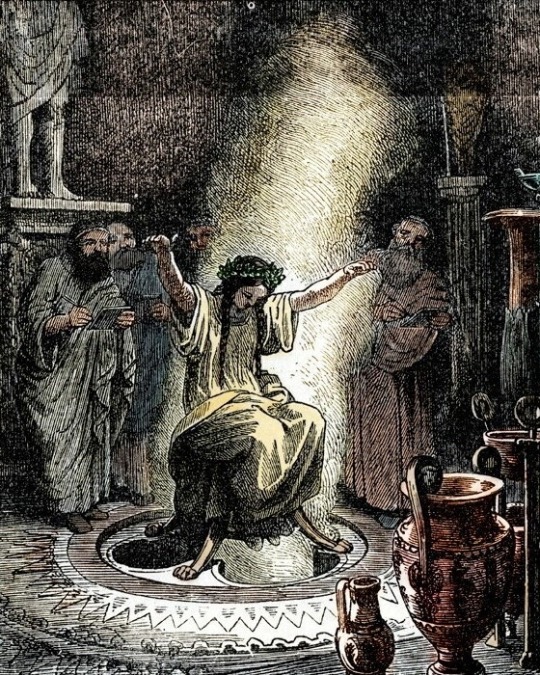
“I wish you a good night, with a Venetian benediction, ‘Benedetto te, e la terra che ti fara!’ — ‘May you be blessed, and the earth which you will make!’ — is it not pretty? You would think it still prettier if you had heard it, as I did two hours ago, from the lips of a Venetian girl, with large black eyes, a face like Faustina’s, and the figure of a Juno — tall and energetic as a Pythoness, with eyes flashing, and her dark hair streaming in the moonlight — one of those women who may be made any thing. I am sure if I put a poniard into the hand of this one, she would plunge it where I told her, — and into me, if I offended her. I like this kind of animal, and am sure that I should have preferred Medea to any woman that ever breathed.”
The mythical and historical allusions:
In Roman myth, Juno was Queen of the Gods as well as a military figure often depicted armed. In Greek myth, Medea was a sorceress who gets revenge against her unfaithful husband through murdering their children and his lover. Although “Pythoness” could refer to demonic witches in other uses, Byron is using it here as another name for Pythia or the Oracle of Delphi, a divine priestess and the most powerful female office in the ancient world.
Faustina is either a reference to the Younger or the Elder. Faustina the Younger was the wife of Marcus Aurelius; he revered her so much that he gave her enormous power, although later historians (probably falsely) accused her of being a murderer and adulteress. Faustina the Elder was the adoptive mother of Marcus Aurelius and was one of the most beloved Roman women in history, whose coinage often features Juno.
Byron's life and writing in context:
When he was living abroad in self-exile, Byron often sought to entertain his friends back home by sharing his adventures in lurid detail. His vivid letters became well-read throughout the 1800s, and are considered some of his best writing. Travel writing and adventure stories were extremely popular in the 19th century, and even most of Byron’s fiction champions these themes. Living abroad and traveling became marketable parts of Byron's celebrity. He blended his own experiences into his work, and chief among these were his romantic experiences.
Shelley once compared Byron to the Greek myth of Circe when writing in a letter about Byron's excessive amount of pets. Circe was known for seducing men and turning them into animals who roamed around her palace. Like a witch or an alchemist, Byron frequently transformed his lovers into characters through his writing. Like countless others, Margarita Cogni was mythically immortalized through the writer's description of her. She and Byron's other Venetian lovers have become part of the wider Romantic era mythology tradition, like the constantly retold tales of Mary Shelley's invention of Frankenstein, Percy Shelley's drowning, and John Keats' love for Fanny Brawne.
By using references to classical women in this letter Byron is not only paying tribute to mythology, history, and the Italian landscape in a way that his foreign audience would find tantalizing, but he is also exploring romanticized notions of classical female beauty which are at turns conventional and unconventional. He channels the gothic sublime through the otherworldly power and danger these women all represent, as well as channeling more traditional concepts of feminine strength rooted in modesty, beauty, and passivity. Byron creates poetic contradictions.
Just as he famously describes himself as “changeable, being everything by turns and nothing long,” he utilizes paradox and inconstance in his writing, such as in this satirical formulation of Margarita Cogni as the ideal lover who is both Goddess and woman, mistress and slave, contemporary and classical, masculine and feminine, wife and adulteress, murderess and murdered.
One can clearly see how this is the same chameolonic, binary-blurring poet who would go on to write the gender-bending themes of Don Juan — “If people contradict themselves, can I / Help contradicting them, and every body, / Even my veracious self?” — and who years beforehand had written She Walks in Beauty — where “all that’s best of dark and bright / Meet in her aspect and her eyes.”
#literature#english literature#lord byron#romanticism#poetry#dark academia#aesthetic#history#mythology#analysis#my analysis#my writing#my essays#byron#poems#letters#women#art#myth#greek#roman#british#english#academia#the romantics#love#romance
64 notes
·
View notes